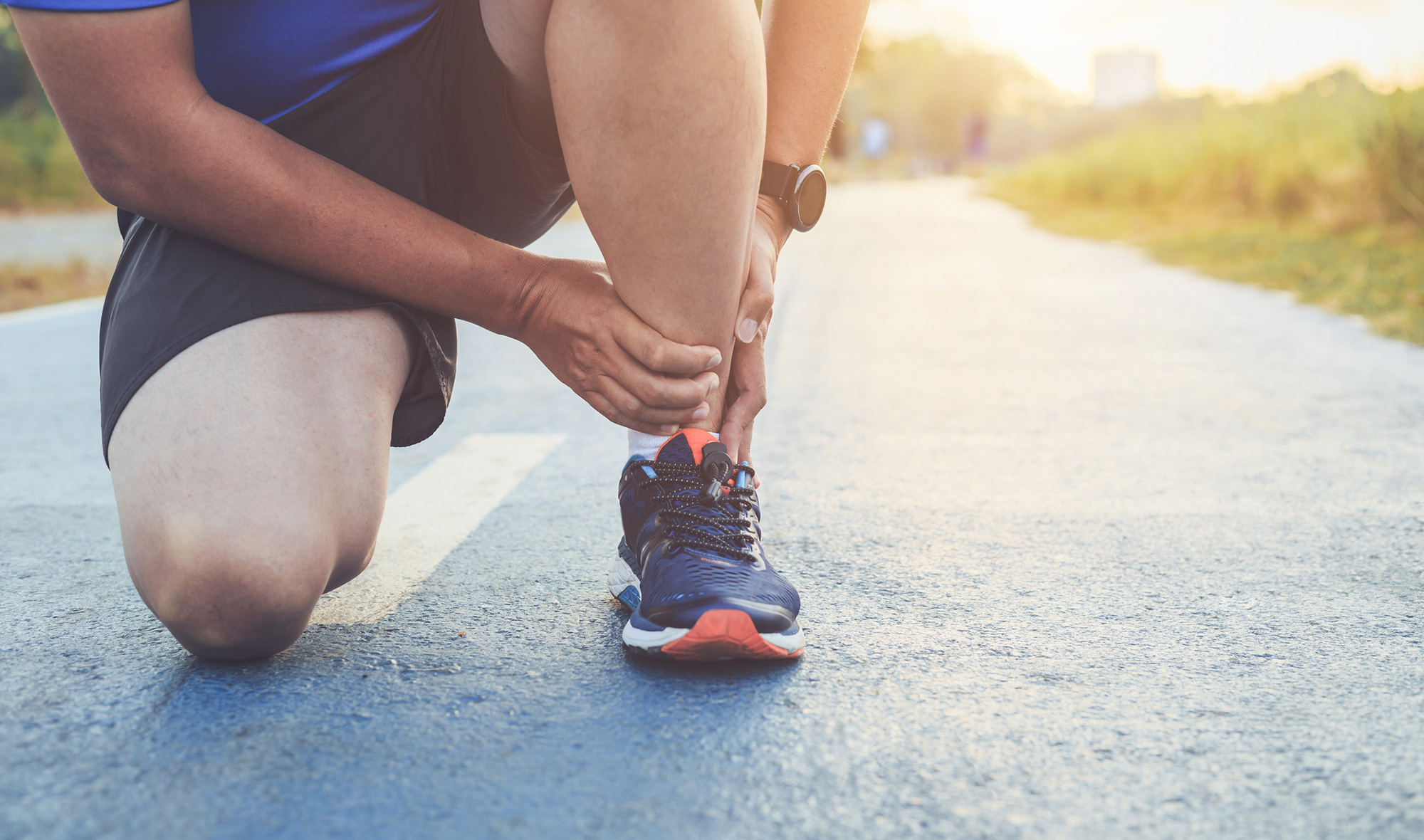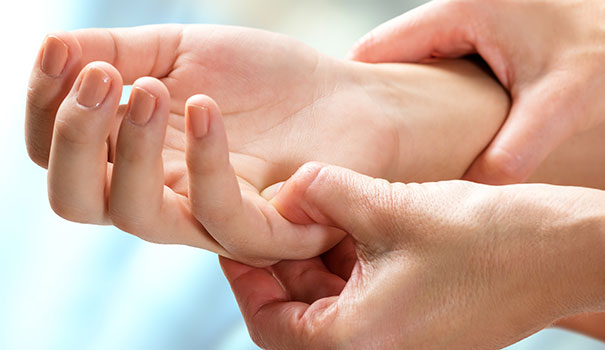What are sprains and strains?
- Sprains refer to tearing of a ligament (one of the tough fibrous cords within a joint that connect the bones together)
- Strains refer to tearing of a muscle or tendon
- Sprains and strains often occur together in or around joints such as the knees, ankles, elbows, shoulders or the lower back.
How do sprains and strains happen?
Joints are like hinges made up of bones, ligaments, tendons and muscles. Their job is to allow the body to move and to absorb the stress of movement.
Sprains and strains occur when a joint is stretched too far or exposed to more weight or force than it can take. This can happen as a result of a sudden twist of a joint inwards or outwards while playing sport or undertaking exercise or an awkward landing e.g. while jumping or running; or in everyday life as a result of stepping onto an uneven surface or falling at home or work.
Sprains and strains can be of differing degrees of severity. With simple injuries a few fibres of a ligament or muscle are torn. With a more severe injury the ligament or muscle may tear completely and involve bone damage such as a dislocation or fracture.
Most sprains and strains are minor injuries and will heal themselves. All injuries should be taken seriously because if they are not managed well there is the potential for them to cause ongoing pain, loss of movement, flexibility, stability or strength and therefore weakness of the affected joint.
What are the symptoms?
Symptoms include pain ranging from mild to severe, as well as swelling and bruising of the injured area. There may also be stiffness and decreased mobility and in severe cases complete loss of movement of a joint.
Managing sprains and strains
The critical treatment period for all sprains and strains is the first 24 to 48 hours after injury. Follow the R.I.C.E.D plan:
Rest
- Stop activity as soon as the injury occurs
- Rest is essential to minimise further damage. Avoid as much movement as possible. A sling, splint, crutches may be necessary to ensure the injured part is properly rested
- Gradual re-use of the injured joint should be obtained; the aim being to avoid any activity that causes pain.
Ice
- Ice reduces swelling by reducing blood flow to the affected area
- Ice may also provide short-term pain relief
- For the first 48 hours after an injury, apply an ice pack to the injury site for 15–20 minutes every 2 hours
- If you don’t have an ice pack, a bag of frozen peas will work just as well
- Wrap the ice pack in a wet towel; don’t put it onto bare skin
- Hold the ice pack in place with a bandage
- Do not apply ice for longer than 20 minutes or you may damage the skin.
Compression
- Compression prevents fluid from normal adjacent tissue seeping into the injured area and therefore limits swelling which can slow the healing process
- Compression also provides support to the injured part
- Use a compression bandage around the injured part between ice treatments
- Make sure the bandage is firm but not too tight or it will cut off circulation. If the patient feels throbbing pain or if the fingers or toes become blue or start to tingle, unwrap and make it looser.
Elevation
- Elevation helps stop bleeding into the soft tissues and reduces swelling
- Try to get the injured part above the level of your heart
- This can usually be achieved by lying down and using pillows to raise the injured body part, or by slings or a collar and cuff
- Use pillows in bed at night to raise the injured body part.
Diagnosis
- See a health professional, eg. doctor or physiotherapist, if you are worried about an injury or If the pain or swelling doesn’t go down significantly after 48 hours.
Avoid H.A.R.M-FUL factor
Heat
- Increases blood flow which may cause more swelling
- Avoid hot baths and showers, hot water bottles or heat packs, saunas and liniments for 72 hours after an injury.
Alcohol
- Increases bleeding and swelling at the injury site and may delay healing
- Too many drinks after an injury may mask the pain and severity of an injury and thus delay appropriate treatment.
Running
- Any form of exercise may cause more damage. Rest is best
- Do not resume activity within 72 hours of an injury unless instructed by a health professional.
Massage
- Can increase bleeding and swelling
- Avoid within 72 hours of injury.
Prevention and Treatment
1. Keep active
- Make exercise part of your daily routine to help keep your muscles and joints strong and flexible and help avoid injuries.
2. Warm up, cool down and stretch
- Warm up before exercising; cool down and stretch after exercise to reduce the risk of injury
- Include aerobic exercise, dynamic and static stretches as part of a warm up
- Find out about sport-specific exercises for the sport you play.
3. Learn correct techniques
- Learn correct techniques for any sport you play especially for “risky” elements such as tackling, jumping, landing, stopping or catching
- Learn them as soon as possible to avoid developing bad habits
- Practice and use them during games.
4. Wear and use the right gear
- Wear appropriate footwear for the activity. Shoes differ with respect to cushioning, flexibility and sole, and the right footwear that fits well will lessen the risk of injury
- Make sure racquets, bats, balls or weights are appropriate for the user.
5. If you get a sprain or strain, treat the injury seriously
- Follow the R.I.C.E.D plan for the first 48 hours after an injury
- Avoid H.A.R.M-ful factors for the first 72 hours
- Ask your pharmacist for advice about medicines that can be used to relieve pain and help recovery
- Find out about protective strapping or supports to give strength to a weakened joint.

















Community